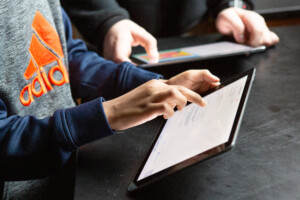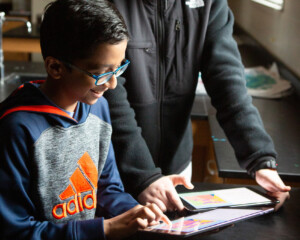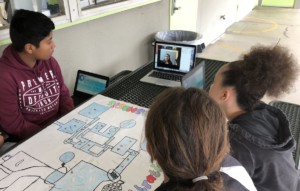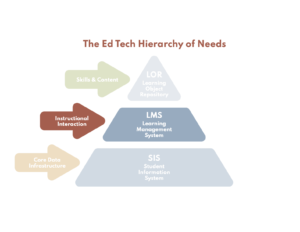The Promise of EdTech: Customization, Motivation, & Equalization

The premise of Getting Smart is that new tools and new schools are changing old assumptions about what is possible. A good editor helped me summarize the key benefits of next-generation learning tools: customization, motivation, and equalization. This important trifecta makes up chapters 3-5 of Getting Smart (and this post is the second of three sharing quotes and comments from the book).
Customization. For authentic high-agency learning pathways, it’s hard to beat the Scouting merit badge system:
When it comes to customized learning the Scouts got it right. For one hundred years they have been awarding badges for Scouts who show what they know. There are three great pedagogical techniques incorporated into the system: (1) Scouts pick the badges they want to work on, (2) they pick a counselor who has special knowledge in the area to serve as a guide and proctor, and (3) they demonstrate their knowledge in some required ways and in some self-selected ways.
Like Mozilla’s Open Badges, there are badge for anything from anyone plays that I don’t find very productive. I’m more interested in standards-based frameworks where students have many ways to learn and where a system of assessments certify learning.
About a developmental math pilot with Knewton and Pearson, Phil Regier, dean of ASU Online, said, “This will show how adaptive learning technology and organic engagement drive better learning outcomes and higher graduation rates.”
I noted, “Math programs like DreamBox, aimed at the K–5 grades, and Mangahigh, a game-based pre-algebra product, suggest content of just the right level of difficulty to help students stay motivated.” Since writing the book, Curriculum Associates developed i-Ready, an amazing adaptive K-8 instruction platform. (For more on adaptive learning, see The Future of Learning—Digital, Mobile, Real-Time.)
To customize learning, students need a Data Backpack: Learner Profiles & Portable Records. Utah took a step in this direction last year.
Motivation. Last month I asked, “Now that the world’s knowledge is widely and freely available, why are we still so largely uneducated?” The big gap is what Marina Gorbis called the “motivational divide” – who, as Tom Friedman said, “has the self-motivation, grit and persistence to take advantage of all the free or cheap online [resources] to create, collaborate, and learn.”
Motivation, the holy grail of education, is so important and so elusive, and yet we know very little about it. In the nascent field of cognitive sciences, hypotheses about learning styles have drawn a good deal of attention from researchers and educators, leaving more fundamental questions of motivation underexplored. Because we need kids to work hard, we need a much more sophisticated and individualized sense of what will capture students’ attention and cause them to persist through discomfort and distraction. Our ability to quickly and efficiently get and use a deep understanding of the intrinsic and extrinsic factors that together cause focused and persistent behavior in each student—a personal motivational profile—will fundamentally change education and the learning professions.
Learning games like ST Math and applied learning curricula like Project Lead The Way (both recently selected by the Change the Equation STEMworks database of high-quality STEM programs that consistently yield positive outcomes) are examples of high engagement learning.
There was a lot of chatter about learning styles in the last decade that hasn’t yielded much, but I think comprehensive learner records will unlock motivational profiles that will build persistence and performance. Imagine customized playlists that are not only at the right level but in the best learning modality for each student.
Equalization. Technology has democratizing potential:
It’s getting easier to find free college courses online or at least free lectures from the world’s leading scholars on sites…With all of this free learning, few colleges can justify charging $30,000 or more in tuition. High schools can’t maintain the old master schedule with limited and traditional offerings with so much access to quality courses and effective teachers. Elementary schools can’t explain away why some students reach the fourth grade and can’t read. It changes everything when anyone can learn anything almost anywhere.
But learning technology can amplify differences in schools and homes–so leadership is critical. Personal take-home technology is key to extending equity and opportunity. Maine may be the first and last state to make the commitment to providing a device, but every state should update their funding policies to encourage mobile learning technology and access to broadband. Bring your own device (BYOD) should augment not replace a commitment to equitable access. (See the updated Blended Learning Implementation Guide for advice on funding the shift.)
MIND Research Institute, DreamBox Learning, and Pearson are Advocacy Partners. Mangahigh is a portfolio company of Learn Capital where Tom is a partner.








0 Comments
Leave a Comment
Your email address will not be published. All fields are required.